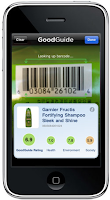There are many environmental and health issues to consider when buying and eating fish. The concerns are significant: mercury poisoning, over fishing, farming impacts, and water pollution. Monterey Bay Aquarium scientists keep up with the scientific research and publish Seafood Watch in three formats to help us make informed decisions on our purchases:
The online seafood search offers detailed information on almost a hundred types of seafood and contains links to scientific reports for further reading.
A free app offers extensive information on ocean-friendly seafood to use when shopping or ordering seafood in a restaurant, as well as maps identifying local businesses who sell it.
Their Pocket Guide is a quick reference that is organized concisely to help us decide at a glance which seafood to purchase for our health, as well as the ocean’s.
“Best Choices are abundant, well managed and caught or farmed in environmentally friendly ways.
Good Alternatives are an option, but there are concerns with how they’re caught or farmed—or with the health of their habitat due to other human impacts.
Avoid for now as these items are overfished or caught or farmed in ways that harm other marine life or the environment.”Currently the "Best Choices" are:
Arctic Char (farmed)
Barramundi (US farmed)
Catfish (US farmed)
Clams, Mussels, Oysters (farmed)
Clams: Softshell/Steamers (wild)
Cobia (US farmed)
Crab: Dungeness, Stone
Croaker: Atlantic*
Haddock (US hook & line)
Halibut: Pacific (US)
Lobster: Spiny (US)
Salmon (Alaska wild)
Scallops (farmed off-bottom)
Squid: Longfin (US)
Striped Bass (farmed or wild*)
Swordfish (Canada and US,
harpoon and handline)*
Tilapia (US farmed)
Trout: Rainbow (US farmed)
Tuna: Albacore including canned
white tuna (troll/pole, US and BC)
Tuna: Skipjack including canned
light tuna (troll/pole)
Seafood Watch information is updated twice a year to support our efforts to eat sustainably.



No comments:
Post a Comment